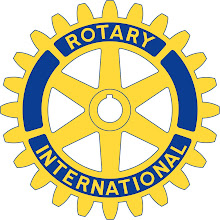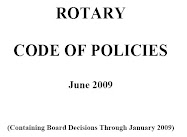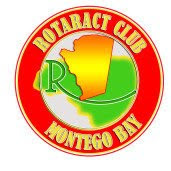 Photo source: Food for the Poor
Photo source: Food for the PoorJust a quick update covering my trip Tuesday to Haiti and the meeting with Rotary International President John Kenny, with the temporary head of the civilian side of the United Nations, and the head of the Red Cross. The trip there and back with Captain Paul Luehrsen in his Mooney aircraft was wonderful. It was just the two of us in a small but comfortable plane and a good time to talk to a very well informed and intelligent person to test our theories of the recovery. (about 8 hours round trip with an additional 5 on the ground), and Thanks Paul. All meetings were very successful and informative and the trip was worth every minute.
Our meeting with President John Kenny was to bring him up to speed with the recovery efforts so far and to give him some idea of what was needed in the future.
We must now bridge the gap between the acute relief stage, and the recovery stage. As UNDP Ms. KIM Bolduc, Regional Representative for the United Nations stated at our meeting, “We cannot fail at this or Haiti will never be fixed”.
The Challenge is that this period requires solutions which might only provide temporary relief and will make the lives of individuals a little better, but must also be consistent with the long term sustainable recovery plan recommendations derived from the Post Disaster National Assessment and ratified at the United Nations. We would recommend the following priorities be established, for the near term by Rotary International.
Food
· Seeds (landed next 2 to 3 weeks only due to planting season)
· Beans
· Rice
· Vegetable oil
 Basic, uniform tents are used for shelter in Barbancourt, in the mountainous region outside Haiti capital Port-au-Prince, where a community of approximately 1500 dispalaced Haitians has relocated. PHOTO: UN News & Media
Basic, uniform tents are used for shelter in Barbancourt, in the mountainous region outside Haiti capital Port-au-Prince, where a community of approximately 1500 dispalaced Haitians has relocated. PHOTO: UN News & Media
Shelter
· Large Tents
o 30’ X 30” through 60’ X 60’ for classrooms, recreation areas, community centers, therapy shelter etc.
o Semi permanent shelter buildings for families
· Awnings to create / build shelters
o 10” X 10’ and up to 30’ X 30’
· Tents
o Straight sides 6’ X 8’ to 10’ X 12’
Money
· Funds to allow us to get exactly what’s needed when we need it and where we need to get it from (to buy local or support local production whenever possible)
o Medical supplies and equipment
o Educational supplies and classroom needs
o All other random requests which meet the urgent priorities identified at the time
Medical supplies and support
· Medical supplies and equipment as specifically requested by specific location
· Physical Therapy equipment and resources to be specified
· Prosthetics
o Continued guidance and support by Jaipur with serious consideration of the Mobile units I have recommended
Agricultural and Industrial development support
(Click here for more information from the UN Food & Agriculture Organisation on this aspect of the recovery effort )
o Tools and supplies for agricultural production
o Lists to be specified
o Equipment and supplies for light industry start ups
o To be specified by defined need
I appreciate the need to provide everyone a list of very specific items so we can focus on only them in the short term but given the varied needs and the varied regions, this is not as straight forward as it might seem. The priorities are changing as the elements of a sustainable future are studied and tested against the master plan being developed. I am confident that we will have a clearer picture of the long term needs in the near future and at that time I hope that we can re-inspire those who can help to “step up” again to help us achieve a long term sustainable healthy future for the country of Haiti.
We are meeting in Miami this weekend during the District Leadership Training with many of the key “On The Ground” players and the District Leadership. I hope to share more information with you shortly.
Richard McCombe
District 7020
Check out The District 7020 Newsletter for how Rotarians all over the District have responded to the disaster in Haiti.








No comments:
Post a Comment